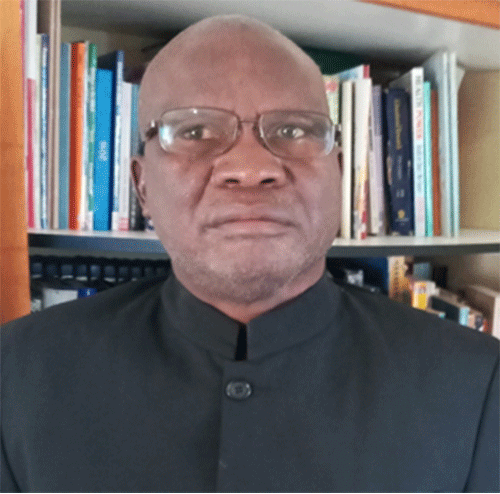In his Muzokumwe Public Lecture 8, Prof. Joseph Diescho, the distinguished Namibian scholar, castigated the youth of Kavango East and Kavango West for failing to take up developmental responsibilities and bemoaned the demeaning unrepresentative situation of the regions in government key positions, despite being instrumental in winning votes because of their large numbers.
He further stressed that it is biblical, moral, ethical and right to stand for one’s rights no matter what it takes. It is along this thinking that the true historical-political situation in the Zambezi regions needs to be told, and expose the miserable socio-economic situation war veterans find themselves after thirty-one years of independence.
It is in this vein that it should be stressed that no amount of alterations and distortions will change the fact and the crucial role played by the people of the Zambezi region in fighting for and liberating Namibia.
It is equally befitting to underscore the point that people under Mamili’s area of jurisdiction in 1968 were targets of naked brutality of the South African Security Forces. During this invasion, the South African Security Forces terrorised, tortured and killed the Mafwe for supporting freedom fighters, and many fled into Zambia.
Whole villages of Kongola, Kalubi, Sesheke, Singalamwe and Chixhu fled into exile in fear of their lives and consequently joined the liberation struggle, while political activists in villages of Masida, Makanga (Nziba), Linyanti, Kikiya and Kanono were not spared. Therefore, the history of the Namibian liberation struggle cannot be complete without mentioning the heroic contributions and sacrifices made by these brave sons and daughters of Zambezi.
CANU-Swapo merger
Politically, Caprivi was one of the very few regions to have had a home-brew political party, the Caprivi African National Union (CANU), in the 1960s. It is equally worth mentioning that it was the only party known to have merged with the South West Africa People’s Organisation (Swapo) in exile. This brings to light the fact that, indeed, both parties came to Zambia with different but common agendas of the liberation struggle.
This revelation hinges on the information that the two parties never met at home ground, but managed to do so on a foreign soil. Consequently, the members of the two parties were strangers to one another, as Swapo was unknown and never publicly campaigned in the Zambezi region before 1976.
The political gimmick being played by some leaders in Swapo denying the merger does not hold water, as truth will always prevail. The merger took place as the preamble opens with the press statement made on 5 November 1964 by Sam Nujoma on behalf of Swapo, and Mishake Albert Muyongo on behalf of CANU, and clearly stipulates that:
“We, the undersigned members of Swapo and CANU do hereby declare that for the interest of our struggle of our two peoples, and freedom and independence of our fatherlands, Caprivi Strip and South West Africa, CANU and Swapo do hereby unite as one organisation in a different name. We further resolve that CANU and Swapo merge and unite as one organisation with the following aims and objectives…”
Model of merger
The mistake CANU leadership and signatory to the merger made was to drop their party name and allowed it to be swallowed by Swapo. The merger could have adopted a formula in which both parties retained their names and identity. For example, when Nkomo and Mugabe went to Lancaster House for cease-fire negotiations, both parties retained their names and adopted Patriotic Front (PF) as an umbrella for ZAPU and ZANU.
Alternatively, the leaders and signatories of the merger should have followed the Tanzania model of merger between the mainland, formerly called Tanganyika and the islands of Zanzibar and Pemba. This model dictates that if the president were from the mainland, Tanganyika, the vice-president would be picked from the islands of Zanzibar and Pemba, and vice versa. But this arrangement seems to have been deliberately ignored by Swapo leadership immediately after independence. The omission and oversight to sideline the merger terms is indeed deliberate and demeaning because Swapo leadership was sheltered in Tanzania for many years and even earned the term ‘Tanganyika Boys’ and, therefore, could have adopted this merger model for inclusivity.
Plight of the war veterans
Thirty-one years of independence have rolled on but the sidelining of the real heroes and heroines continues unabated. For 31 years, former war veterans are told to be patient, while those who dined with the racist system continue to benefit from the current system of rule.
The children of the heroes and heroines, especially from the areas that were targeted, are discriminated against in any form of promotion – be it in government or in tertiary institutions.
Yes, independence and national reconciliation is for every Namibian, but those who sacrificed more than others should reap and enjoy the fruits of their struggle.
Maundeni, Bwalya and Kwerepe (2015) contend that one of the interpretations of the causes of conflicts in Africa is that they are materialistic, while Mkhabele (2011) argues that conflicts in Africa are not only deep-rooted in the colonial past, but have also been perpetuated by post-colonial governments’ failure to manage ethnic and racial diversity in the process of nation building. However, whatever the case, some war veterans in Namibia need better treatment.


